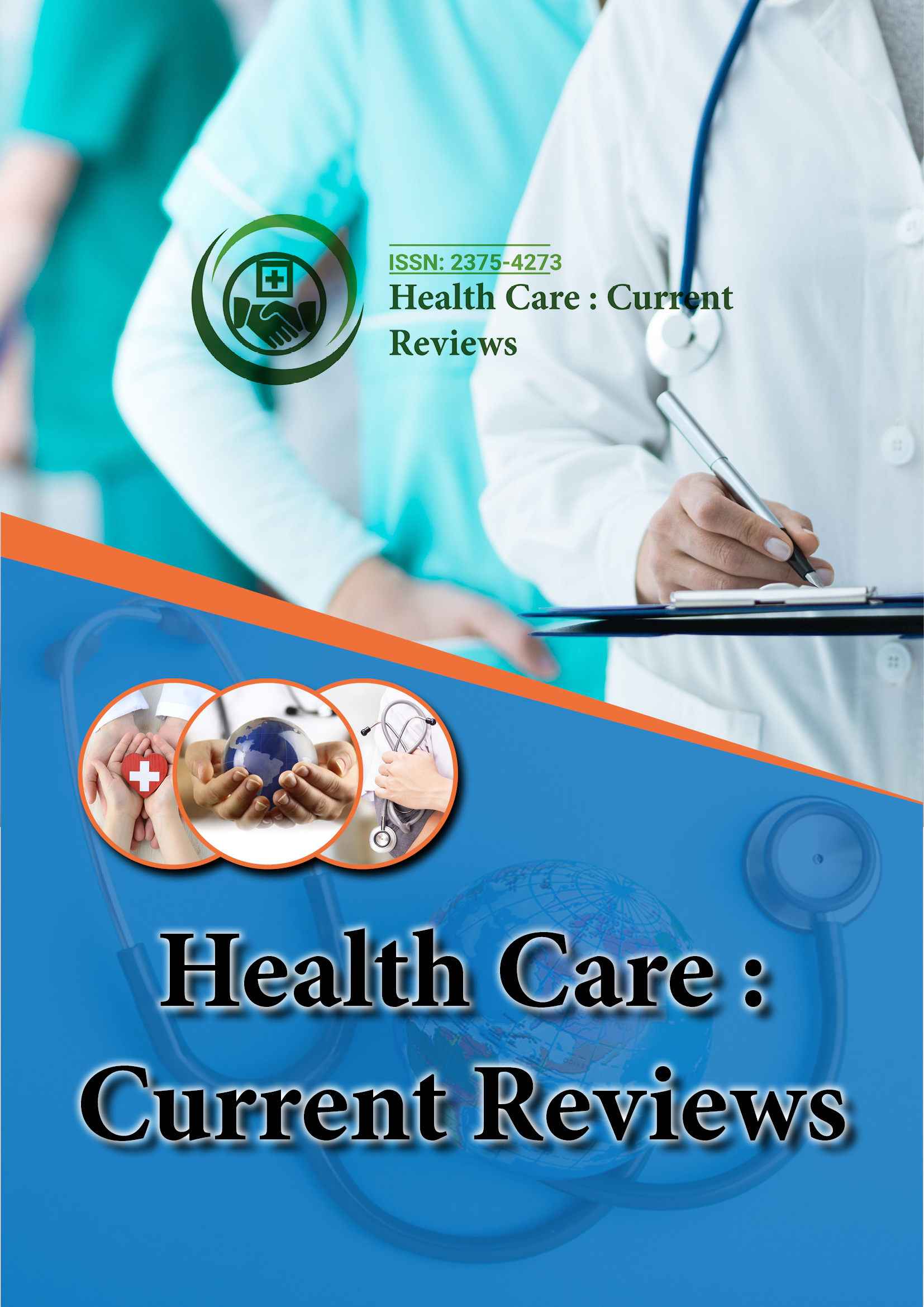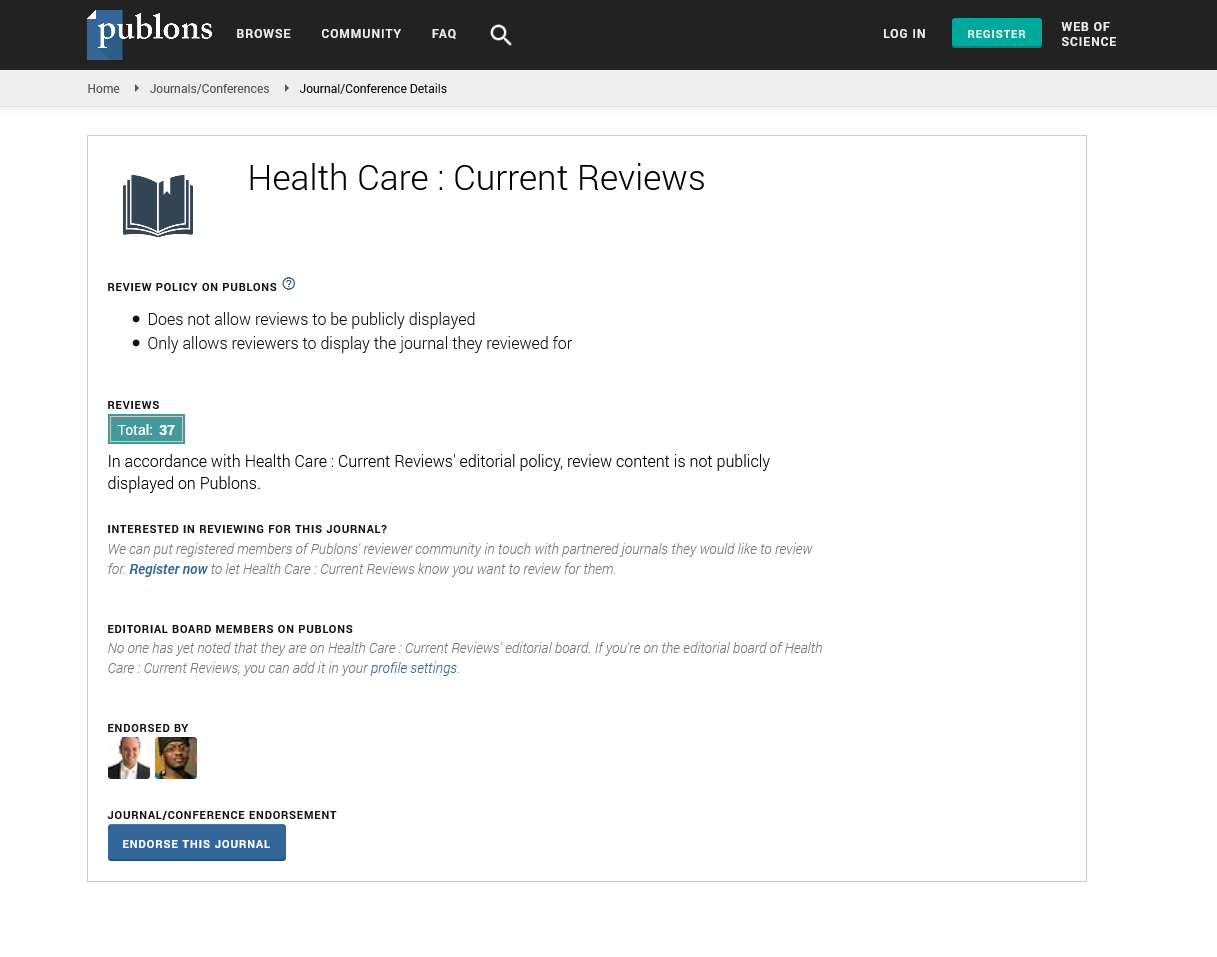Indexed In
- Open J Gate
- Academic Keys
- RefSeek
- Hamdard University
- EBSCO A-Z
- Publons
- Geneva Foundation for Medical Education and Research
- Google Scholar
Useful Links
Share This Page
Journal Flyer

Open Access Journals
- Agri and Aquaculture
- Biochemistry
- Bioinformatics & Systems Biology
- Business & Management
- Chemistry
- Clinical Sciences
- Engineering
- Food & Nutrition
- General Science
- Genetics & Molecular Biology
- Immunology & Microbiology
- Medical Sciences
- Neuroscience & Psychology
- Nursing & Health Care
- Pharmaceutical Sciences
Opinion Article - (2022) Volume 10, Issue 7
Health Care Information Technology in Patient Care
Jack Dawson*Received: 04-Jul-2022, Manuscript No. HCCR-22-17695; Editor assigned: 07-Jul-2022, Pre QC No. HCCR-22-17695(PQ); Reviewed: 21-Jul-2022, QC No. HCCR-22-17695; Revised: 28-Jul-2022, Manuscript No. HCCR-22-17695(R); Published: 05-Aug-2022, DOI: 10.35248/2375-4273.22.10.305
Description
The health and wellness sector has been impacted by the information technology industry's constant advancement in a way similar to other sectors. The past few years have seen a change in care and health care due to technological advancement. Because modern medicine and technology are so intertwined, doctors must employ these tools to treat and diagnose patients' problems. These days the expansion and development of communication, telecommunications and informatics technologies has led to a notable transformation in the way that health services are provided as well.
Additionally, several information technology approaches are assisting this department's development including telehealth, robotic surgery, patient acceptance and other systems for saving patients' medical services and operation data. Which all have as their common goal to facilitate treatment affairs? Healthcare Information Technology (HIT) has been widely employed and integrated into the healthcare process throughout the course of several recent decades. HIT was initially utilized for technical and management objectives but because to issues in the healthcare industry, health care presenters are increasingly connected to it for appropriate and quick access to health-related information.
Consequently it is challenging to envision the healthcare system without technologies for information and communication. Regarding this HIT is used to automate processes including sequencing, diagnosis, electronic insurance claim processing. The original study findings showed that at a rate of 83% 66% and 43% respectively physicians had access to patients' laboratory results, clinical data and prescription information electronically from their offices. Additionally only 21% of doctors communicated with their patients through email. As the primary way to boost doctors' readiness to use information technology up to 55.6% chose to raise awareness of clinical information systems. As a result doctors must use innovative technologies in ambulatory treatment. In order to overcome the early difficulties in implementing these technologies the health care organizations should become familiar with these systems. Studying the current scenario regarding the rate of physicians utilizing new technology is relevant because clinical staff, such as physicians is one of the key groups adopting HIT in the medical industry. HIT can be used extensively if clinical staff (such as doctors, nurses and other healthcare professionals) supports it.
According to the data regarding the use of telehealth services by physicians the doctors in ambulatory care facilities only sometimes used these facilities for their patients. It appears that doctors were less open to provide their patients with longdistance care through telephones. The findings demonstrated that physicians were unable to effectively use health-care information in patient services in their interactions with patients. They were also unable to improve patient communication about medical decisions or demonstrate how well patients understood them. The telemedicine can help manage serious conditions better.
Additionally it can cut down on patient references that are unneeded. It reveals usage of health technology in outpatient care facilities lowers medical risks and improves patient safety. The results of the current survey indicated that the majority of doctors accessed social media for personal usage. The findings of this study demonstrated that the majority of doctors did not electronically record prescriptions for medications requests for patient tests or requests for radiology in their clinic. This is the reason why pharmacies, laboratories, and radiography facilities could not electronically interact with the computerized systems of the medical clinics. Because of this doctors were unable to electronically access the test results, radiological reports and medication prescription of their patients when it was necessary. As a result, they were unable to continuously monitor their patients' clinical status.
Citation: Dawson J (2022) Health Care Information Technology in Patient Care. Health Care Curr Rev. 10:305.
Copyright: © 2022 Dawson J. This is an open-access article distributed under the terms of the Creative Commons Attribution License, which permits unrestricted use, distribution, and reproduction in any medium, provided the original author and source are credited.

